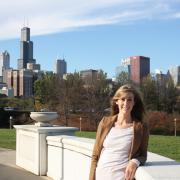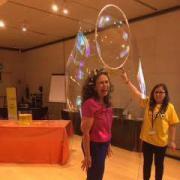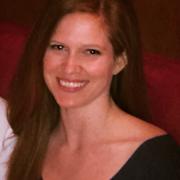The enormous growth of mobile technology as seen in the prevalent use of mobile devices world-wide has implied that museums and cultural spaces adapt to their visitors’ use of this mobile media. Integrating mobile media into exhibitions and programming leads to endlessly different interpretations and content delivery. When using this new technology, visitors behave differently in the museum space; their interpretation of and engagement with content is altered by the addition of their treasured, personal information outlet. With the right forms of collaboration, museums of all sizes can embrace mobile technology and enhance their institution as well as their visitor’s experience. Our projects present enthusiasm for mobile technology in addition to success and excitement for the collaborative efforts needed to create and support these projects. Our session will discuss why museum spaces should embrace mobile technology based on original visitor research by a collaborative study between two international colleagues representing museum spaces, universities, and start-up companies in the United States and Germany as well as other case studies.
PhD Researcher Museum Studies
Neanderthal Museum
Düsseldorf
Germany
Since mobile devices are prevalently used in society, museums have begun to design mobile content in the form of apps. As part of a PhD project at the Neanderthal Museum, an app has been developed using modern mobile technologies like iBeacon and offers the opportunities of a visitor research tool. The presentation will demonstrate the research approach behind with a reference to a research cooperation between the Universities of Illinois at Chicago and Cologne based on an app spin-off.
Chief Curatorial Officer
Encurate
Chicago
United States
Mobile technology continues to grow at an exponential rate and much of the museum world is missing out. This presentation will introduce a concept for a mobile-media platform for museums to provide an unobtrusive path through the exhibition without distracting the visitor from their experience in the space. Solutions for overcoming obstacles mobile-less institutions face will also be addressed.
Museum Expert
Wandering LTD was awarded as UNESCO Best Mobile Learning Practice & Mofet Teachers for Teaches Institute in Israel.
This presentation will present The Wandering platform. It is a technological, knowledge platform generating engaging activities for learning, training, team building, research, and fun. Users can practice, comment, create, share, rate, organize and certify experiences generated by others. Activity related content is the core essence of the platform that brings people back to the community as active players and builds a vibrant community over the platform.
Head of Communications & Community Partnerships
National Museum of Health + Medicine Chicago
Chicago
United States
The cultural and technological shifts that have accompanied the
ubiquity of smartphones have changed people’s expectations of
what makes an experience meaningful and appealing. More than
ever, we seek opportunities to both create and share online
content. We seek outlets for personal expression and to receive
feedback. We seek ways to connect and interact with
online content and each other in new ways, both asynchronously and in real-time.
Because of this, the design of an online experience with museum
content must be predicated on meaningful engagement, in which
the user can explore exhibitions and collections in new ways, can
draw connections across and between disciplines, and participate in online discourse while maintaining a sense of agency by learning through autonomous interaction and self-guided discovery.
This presentation will explore the notion that democratic access to
cultural information in the form of an online collaborative space and
the integration of diverse organizations can provide cultural
institutions with the ability to facilitate more wholistic learning opportunities.
By using mobile and web applications as tools and offering a museum-focused social platform, institutions and the public
can work cooperatively to create more interesting, enriching and
truly participatory experiences that broaden the reach of the
museum and strengthen the voice of its visitors.





